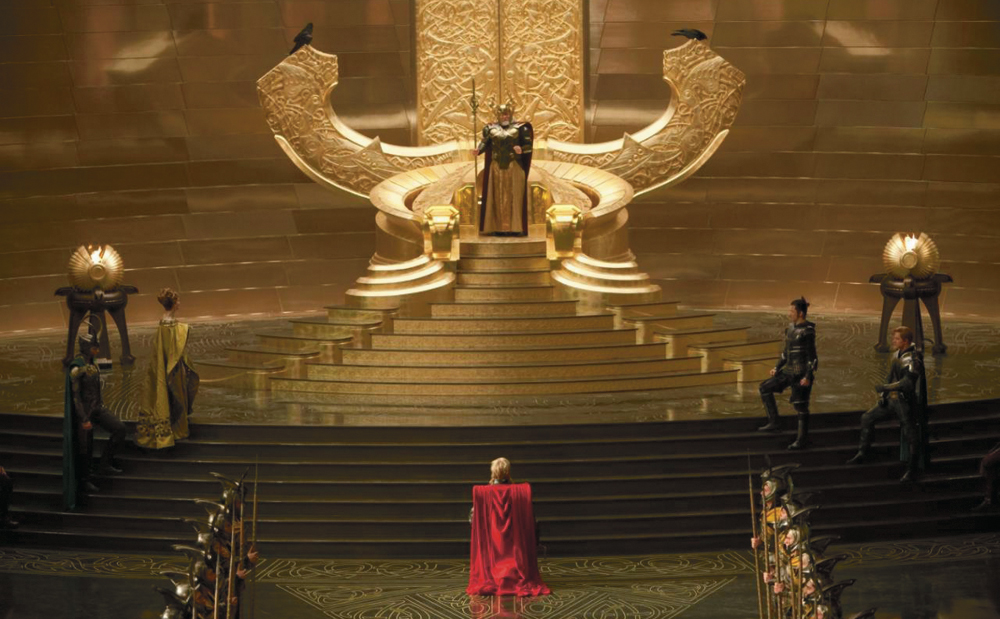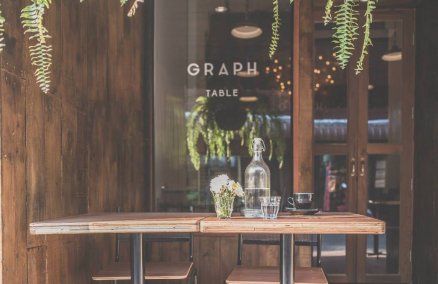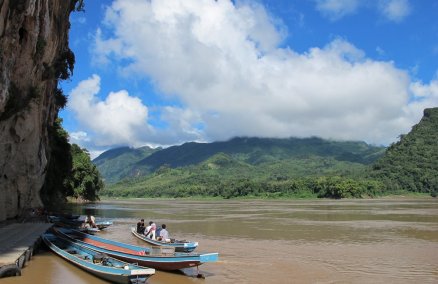Admittedly, touring the Khmer temples of Northeastern Thailand is a pretty geeky holiday. But even if you’re not an architecture buff, you should visit Isaan’s southern provinces and these old ruins provide a common thread—or simply an excuse—to travel through them all. As with all great road trips, it’s not about the destination, it’s all about the journey: getting lost in rice fields, losing all cell coverage, rolling down your window to interrupt a farmer’s labor for directions and zipping past Isaan’s beautifully decorated trucks. It’s also a destination far off the beaten track. At some of the smaller temples, you’ll often be the only visitors so that, even at the height of Songkran, you won’t be rubbing shoulders with Bangkokians.
ITINERARY
The temples run through Korat (Nakhon Ratchasima) and the provinces bordering Cambodia (from west to east: Buriram, Surin, Sisaket, Ubon Ratchathani). Unfortunately, that means this itinerary takes you from A to B, and doesn’t form a loop. Ideally, we recommend you fly to Ubon Ratchathani, rent a car, and drive it all the way back to Bangkok. Before leaving, stop by a bookstore and get yourself a good road map of Isaan.
The flight
Both Thai Airways (www.thaiair.com) and Air Asia (www.airasia.com) fly to Ubon. At the time of writing, we were still finding B3,500 roundtrips on Air Asia for Songkran, although prices will definitely have gone up by the time you read this (or be much lower if you book for later this year). Thai Airways was B5,300 but rates there do tend to change more slowly.
The drive
Thai Rent a Car’s Khon Kaen office will deliver to Ubon Ratchathani for B2,500, and allow you to drop the car off in Bangkok for an extra B1,605. The car’s daily rate starts from B1,620 a day. (So this 3-day trip would cost you B8,965 without fuel.) Call the Khon Kaen office at 087-505-0507. www.thairentacar.com
Budget has an office in Ubon but the charge for a drop-off in Bangkok is B3,210 while daily rates start from B2,040—which also comes out to B9,330 for three days. 1-800-283-438, www.budget.co.th
If you can’t or don’t want to drive, you’ll have to sign up with a tour agency. Many offer Khmer temple tours with drivers and guides. Try Chai Tour, 02-212-8431 (packages start from B8,600), Asia Trails, http://tiny.cc/Kz5ek (four-day trip is US$1,673 for one person, US$1,762 for two people and US$2,055 for three people) or Exotissimo, 02-636-0360 (a nine-day Isaan package starts from around B100,000 per couple. Customized itineraries available upon request).
UBON RATCHATANI - SISAKET
Staying in Ubon
Ubon is a quiet and charming town. It’s crown jewel is the Tung Sri Muang temple’s library. We also recommend lunch on the little rafts by the river. If you decide to stay in Ubon, there are plenty of cheap options you can check out by driving around. For something more comfortable, hole up at the Tohsang City Hotel, (251 Palochai Rd., 045-245-531. www.tohsang.com) for around B1,200/night.
Around Ubon
The region is also home to Khong Chiam, a village on the Lao border, surrounded by gorgeous national parks. For our story on that area, visit http://tiny.cc/lo5r1. If you have time, do build in a couple nights there, but for the purpose of this story, let’s assume you’re off to Sisaket directly, leaving in the early afternoon.
Preah Vihear
From Ubon Ratchathani, use highway 2178 and 221 via Amphur Warin Chamrap, Samrong, Benchalak, and Kantharalak to the Preah Vihear National Park (100 km, 90 min).
Preah Vihear, along with Phimai (Korat) and Phanom Rung (Buriram), is one of the top three Khmer temples on the Thai-Khmer temple trail for its sheer size. Its numerous structures and water basins cover four different levels, with the most impressive architecture at its summit.
As you know, Preah Vihear is in a disputed area. To find out if it is open and to sleep over at the park, contact Khao Phra Wihan National Park at 045-61-9214 or the Department of National Parks at 02-562-0760.
Staying in Sisaket
If you’re in no mood to rough it at the Preah Vihear National Park (or in no mood to get bombed in your sleep), there are a couple of options in town. Drive to Amphur Muang Sisaket (110km, 100min). Boonsiri (1191/3 Vigitnakorn Road, 045-622-222 www.boonsiriboutiquehotel.com/), as it’s new, is surprisingly decent for merely B400 a night—if you can take all the pink and floral prints. The other hotels in town are also 4-8 story affairs but tend to be older and fairly drab. The only place with a bit of character is the wooden house at the foot of Baan Kaew Ruen Kwan. It’s the same owners so contact them and ask to stay at Baan Apa (B1,000 night, 1478/1-30 Vijitnakorn Rd., 045-643-133/4).
Eat
Eat by the railway tracks (that’s true in a lot of these small towns), where you’ll find numerous stalls and some concrete tables. You buy your food at the stalls, sit at the tables. It’s not really self-service because the beer girls will clean the table for you, mix your drinks and then (at least ours did) refuse to take a tip. In other words, with
SISAKET - SURIN - BURIRAM
Around Sisaket
There are two temples close to town, on your way to Surin: Prasat Wat Sa Kamphaeng Yai and Noi (big and small). Mr. Big’s name is well-deserved as it’s the biggest complex in the province. It’s also surrounded by more recent Buddhist temples so there’s a lot to see. The smaller Kamphaeng temple is the more charming though. It’s on very quiet temple grounds, where monks live in huts, bordering a pond, and is somewhat overrun by vegetation, making it all the more romantic.
Surin
About halfway between Amphur Muang Sisaket and Amphur Muang Surin (96km, 90min) is at Prasat Hin Sikhorapum. It features some of the most beautiful sculpted lintels in the region and a couple of its five prang still have complete roofs, mostly thanks to restorations from Laotian invaders in the 15-16th century—hence their hybrid style.
After Surin, you’ll find Prasat Baan Plai, which still has two prang standing but not much carving to show for itself. Nearby is Prasat Baan Phluang, which is almost the opposite: just one edifice but incredibly intricate stonework.
Buriram
You should be able to time your arrival to catch the sunset at Prasat Hin Phanom Rung. It sits on an extinct volcano, commanding sweeping views of the countryside surrounding it. It’s a big complex, with a long pathway connecting two groups of buildings. The architecture and the carving is superb thanks, in part, to 17 years of restoration work. This one should definitely make it onto the World Heritage list very soon. 5km from there is Prasat Mueang Tam which is another well-preserved complex with two libraries, an inner enclosure, ponds and an outer enclosure, not to mention more beautiful carved lintels.
Where to stay
You’ll need to drive to Nangrong: another provincial town, another host of soulless hotels. The Park Nangrong, just outside of town, is your cutest option and rooms start from only B700. 445/10 Praditpana Road, Nangrong. 044-633-778. www.theparknangrong.com
PHI MAI (Nakhon Ratchasima)
It’s roughly another 100km from Nangrong to Phi Mai. This temple is actually in town, which is fun because there’s food and other stuff to check out around it. The temple itself is probably the most charming in Thailand, with its serene Buddha images sitting under prangs with delicately carved lintels and its outer courtyards where tall, majestic trees soar amid the crumbling walls.
That’s it. You’re done! At this point you could complete your tour by going through central Isaan back to Ubon, through Khon Kaen, Roi Et and Yasothon, or head down to Bangkok and get a bit more Khmer culture at Lopburi on your way back. For our story on Lopburi, visit http://tiny.cc/5iufy. If you drive straight back to Bangkok, it’s a 270-km drive.
If you decide to stick around in Phi Mai, The Old Phimai Guesthouse has air-con rooms for only B350/night. 214 Mu 14 Chomsuda Sadet Rd., 044-471-918. www.phimaigh.com
Thai Khmer Temples 101






















